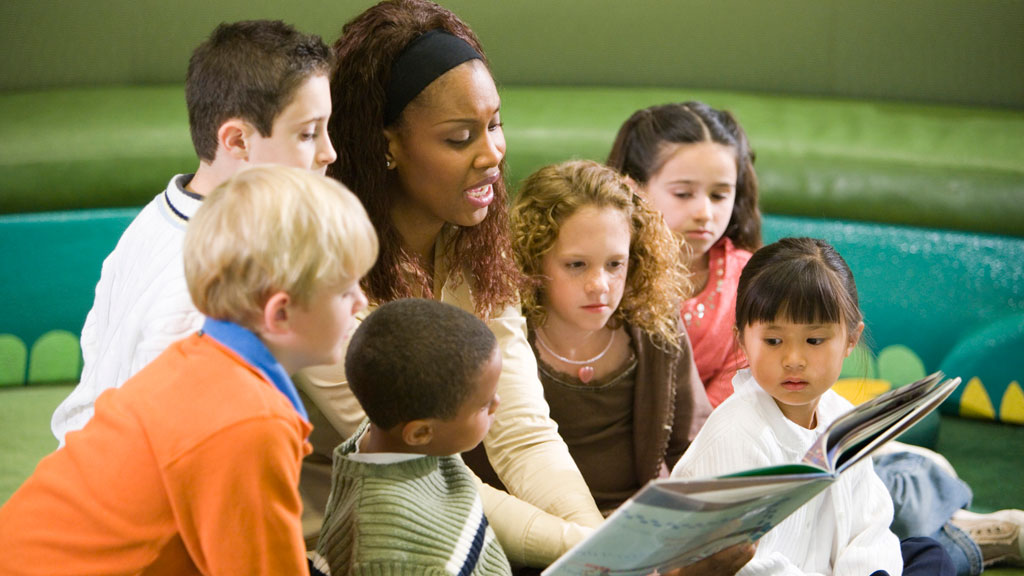It’s probably happened to you many times. You are reading a book or telling a fairy tale when cries of outrage surface from your child: “That’s not fair!”, “How can they do that!”, “Why are they being so mean?” There is nothing like a story to get a good discussion of ethics started. Whether the story is real or imagined, young children have a strong opinion about what they perceive as the characters’ moral actions. They may empathize with the victim or relate to the perpetrator but most children will want to tell you just how they feel and what they believe.

Ethics, values and morals are a difficult subject to broach with your young child. Artificially contrived conversations rarely work because they do not have enough experiential data for children to work with and we all know that young children learn best through concrete experiences. The abstract nature of ethics makes it even more important to give children something to digest. And what better place than with good books, fairy tales and fables? The beauty of a story is that children loose themselves in it and “become” the characters, feeling their joys and sorrows. From that place of “other”, we find children are more able to talk about emotions and values than if they were being themselves.
The Many Faces of Cinderella
The best part is that we don’t even have to try to set these situations up! The deepest and most thought provoking conversations often come from one spontaneous question after a story. My kindergarten class had just heard Cinderella when a child wondered out loud, “Why did Cinderella’s step sisters make her work so hard?” Instead of answering the question, I asked the children to give their opinion and asked questions of my own. This naturally lead to a conversation about mistreatment and oppression. Children expressed not only their opinions but also their own experiences. The word oppression may seem large for young children to deal with but the concept is not. All children have had some experience with being mistreated and can relate to Cinderella’s plight. This discussion spawned a new classroom theme based on the “Many Faces of Cinderella”. In researching the topic, I found that there were hundreds of Cinderella stories told around the world. The scenes and figures may be different but the theme of a young person (not always a woman) being unfairly treated stays the same. The kindergartners delighted in comparing and contrasting the different Cinderella stories and noted the different aspects on a wall chart. By examining these stories together the children not only got a wonderful opportunity to talk about ethics but also were able to witness common experiences shared by cultures.
Capturing the Moment -Listening to what children have to say!
You can use a variety of strategies to capture the moment by following your child’s interest and lead.
· Listening is your best strategy. When you truly listen to the questions children are asking and the answers they give, you open the doors to understanding their thinking and perhaps their beliefs. You might ask yourself: What are they saying to me? What are their concerns and needs? How can I best facilitate this conversation?
· Beyond listening is the strategy of questioning. Instead of answering their questions, ask some more! Often children already have an answer in mind when they ask a question and are looking to you for validation. Unfortunately, you do not encourage children’s own problem solving if you answer the question for them. You might ask, “What do YOU think?” or “Why don’t you ask someone for their opinion?” or “How can we solve the character’s problem together?” This turns the discussion into a process, not a dead end.
· Avoid making judgments. Here is the rub. The essence of a great ethics conversation is not necessarily the conclusions drawn but the diverse ideas expressed. It is crucial to maintain an open environment where children feel free to express opinions without fear of reprimand. Young children need to try on beliefs for size.A child may one day “side” with the victim and the next day with the protagonist! Respect for children’s thinking is the core to all your strategies.
Here are some Great Stories For Grand Conversations
Fairy tales, fables, and proverbs are particularly valuable for “moral” conversations because they usually have good and evil character(s), a problem, and a helping entity. And the issues are universal! The following are examples of interesting books (including many of the Cinderella stories) which are bound to get everybody deliberating.
Cinderella Stories:
An Anklet for a Princess: A Cinderella Story from India by Lila Mehta (Shens Books & Supplies)
Ashpet– An Appalachian Tale, Joanne Compton -(Holiday House)
Cinderella, Marcia Brown – (Scribners)
The Rough-Faced Girl, Rafe Martin (Putnam)
Sootface, Robert SanSouci (Dell)
Turkey Girl, Betty Baker -(Macmillan)
The Egyptian Cinderella, Shirley Climo – Thomas Crowell ( Climo has many others such as The Korean Cinderella, The Irish Cinderlad, etc.)
Three Little Pigs
Three Little Pigs, illustrated by John Wallner – Viking Kestral
The True Story of the Three Little Pigs, Jon Scieszka- Viking
Little Red Riding Hood
Lon Po Po, Ed Young – Philomel
Fables
Aesop’s Fables, Lisbeth Zwerger – Picture Book Studio
Fables, Arnold Lobel – Harper and Row
There are many strategies you can use to facilitate moral conversations with literature. Whatever strategy you use, it is important to remember this is a process of children discovering values based on their own experience and thinking, not on morals they are taught are right. Your children will remember and apply these ethical conversations and experiences when they feel they had input in the decision making.

